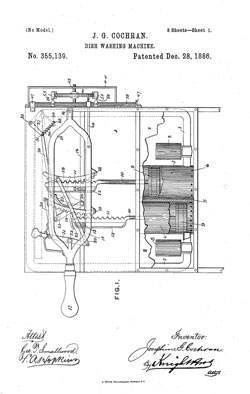 Josephine Cochran was issued Patent No. 355,139 on December 28,1886 for a dish washing machine. Cochran was a wealthy woman in Illinois who frequently hosted dinner parties. She became frustrated when her servants would chip or break her heirloom china so she began washing her own dishes. She was upset with the indignity of having to wash her own dishes and decided that there must be a better way. Since no one else had invented something, she was going to do it herself.
Josephine Cochran was issued Patent No. 355,139 on December 28,1886 for a dish washing machine. Cochran was a wealthy woman in Illinois who frequently hosted dinner parties. She became frustrated when her servants would chip or break her heirloom china so she began washing her own dishes. She was upset with the indignity of having to wash her own dishes and decided that there must be a better way. Since no one else had invented something, she was going to do it herself.
Cochran set to work on her design, staying home from a vacation with her ailing husband. She began by measuring the dishes. She then built wire compartments to fit either cups, plates or saucers. The compartments were placed on a wheel which was turned by a motor inside a watertight metal box. Hot soapy water squirted up in and rained down on the dishes cleaning them. Continue reading “Famous Women Inventors: Josephine Cochran – Dishwasher Patent”

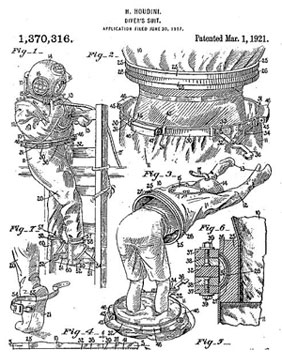 Harry Houdini was born in Budapest, Hungary, to a Jewish family. Houdini began his career as a trapeze artist and was later renowned as a magician and an escape artist. He astonished audiences by escaping from handcuffs, straitjackets, and prison cells.
Harry Houdini was born in Budapest, Hungary, to a Jewish family. Houdini began his career as a trapeze artist and was later renowned as a magician and an escape artist. He astonished audiences by escaping from handcuffs, straitjackets, and prison cells.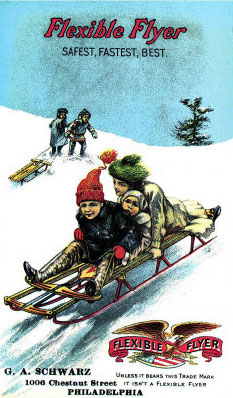 The Flexible Flyer was invented over 100 years ago by a farm equipment manufacturer. Looking to provide year round employment for his workers, Samuel Leeds Allen began trying to invent a sled in the 1880’s. Coasting, as sledding was then known, was very popular and Allen was hoping to capitalize on this.
The Flexible Flyer was invented over 100 years ago by a farm equipment manufacturer. Looking to provide year round employment for his workers, Samuel Leeds Allen began trying to invent a sled in the 1880’s. Coasting, as sledding was then known, was very popular and Allen was hoping to capitalize on this.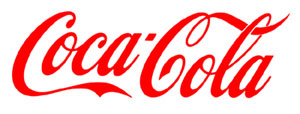 Would you believe the world’s best known brand got its name from a bookkeeper?
Would you believe the world’s best known brand got its name from a bookkeeper?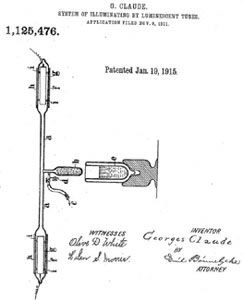 In 1915, a U.S. Patent No. 1,125,476 was issued to George Claude of Paris for a “System of Illuminating by Luminescent Tubes.” This patent was the basis for the neon sign. Claude, an engineer, chemist and inventor was the first person to create a lamp by applying an electrical discharge to a sealed tube of neon. By mixing other gases with the neon, Claude was able to produce the light in many different colors. He, also, discovered that the tubes holding the gas mixture could be bent and twisted. This allowed him to produce the letters and shapes that are the signature of a neon sign.
In 1915, a U.S. Patent No. 1,125,476 was issued to George Claude of Paris for a “System of Illuminating by Luminescent Tubes.” This patent was the basis for the neon sign. Claude, an engineer, chemist and inventor was the first person to create a lamp by applying an electrical discharge to a sealed tube of neon. By mixing other gases with the neon, Claude was able to produce the light in many different colors. He, also, discovered that the tubes holding the gas mixture could be bent and twisted. This allowed him to produce the letters and shapes that are the signature of a neon sign.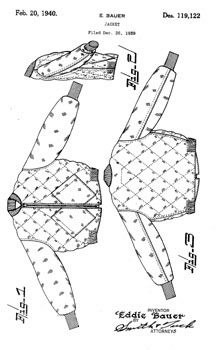 On February 20, 1940, Eddie Bauer received Design Patent Number 119,122 for a jacket. Bauer caught hypothermia while fishing in the cold, rainy Washington winter in 1936. After his near death experience, he began attempting to develop alternative outdoor wear.
On February 20, 1940, Eddie Bauer received Design Patent Number 119,122 for a jacket. Bauer caught hypothermia while fishing in the cold, rainy Washington winter in 1936. After his near death experience, he began attempting to develop alternative outdoor wear.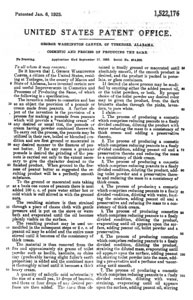 On January 6, 1925, George Washington Carver was granted patent #1,522,176 for a cosmetic and processing of producing the same. This cosmetic was a cream made from peanuts. In the patent, Carver describes this as a “vanishing cream of any desired or usual tint.”
On January 6, 1925, George Washington Carver was granted patent #1,522,176 for a cosmetic and processing of producing the same. This cosmetic was a cream made from peanuts. In the patent, Carver describes this as a “vanishing cream of any desired or usual tint.”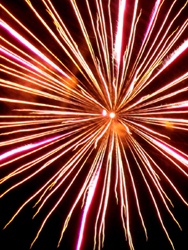
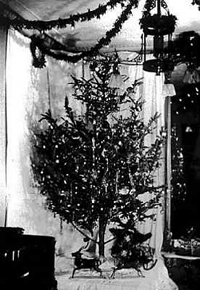
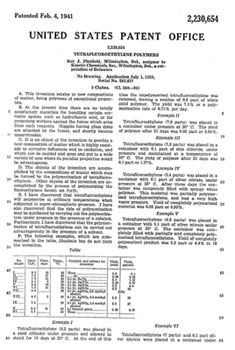 Teflon is yet another product invented entirely by mistake. Roy Plunkett, a research chemist at Dupont, was experimenting with synthesizing new types of refrigerant gas when he accidentally produced Teflon.
Teflon is yet another product invented entirely by mistake. Roy Plunkett, a research chemist at Dupont, was experimenting with synthesizing new types of refrigerant gas when he accidentally produced Teflon.